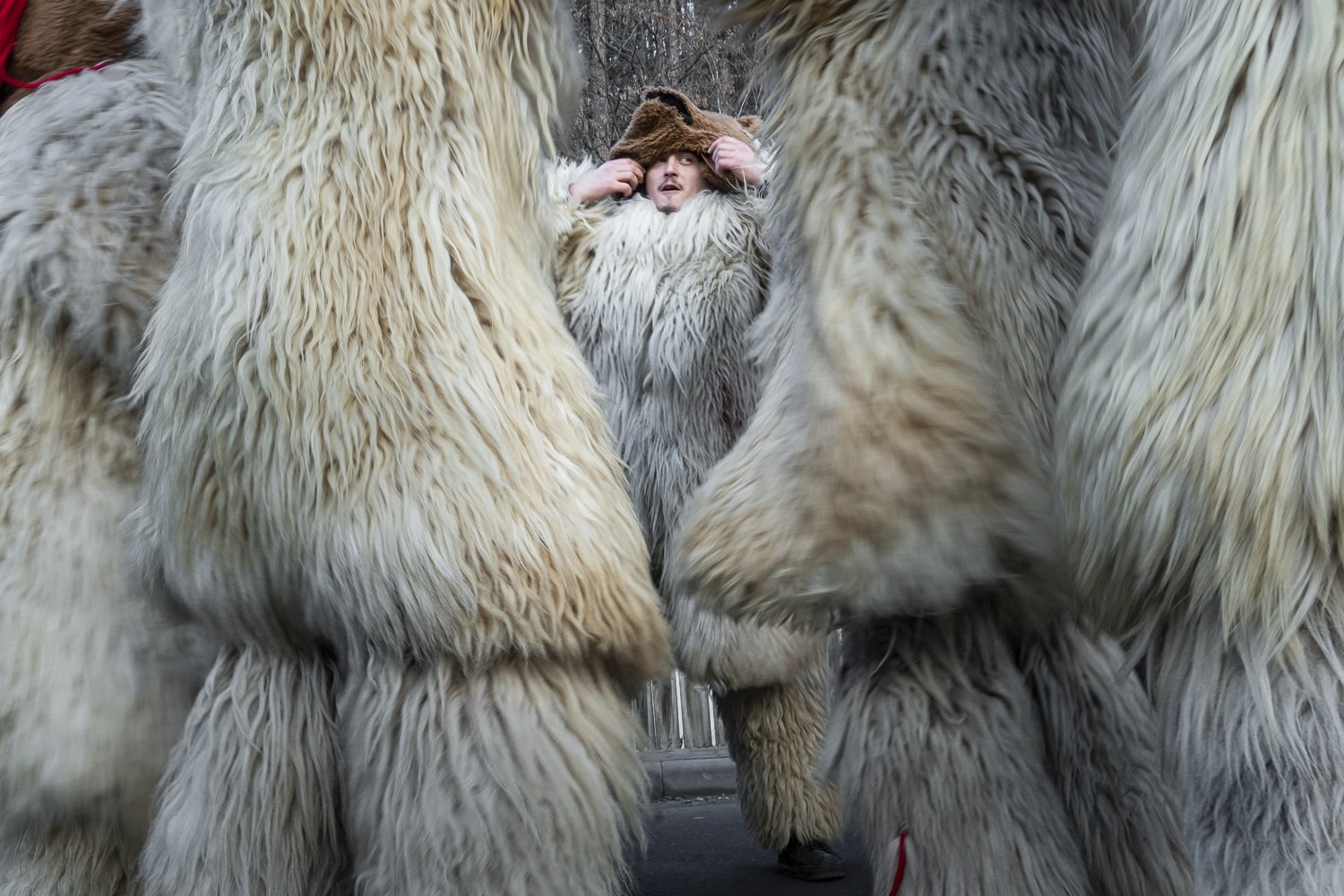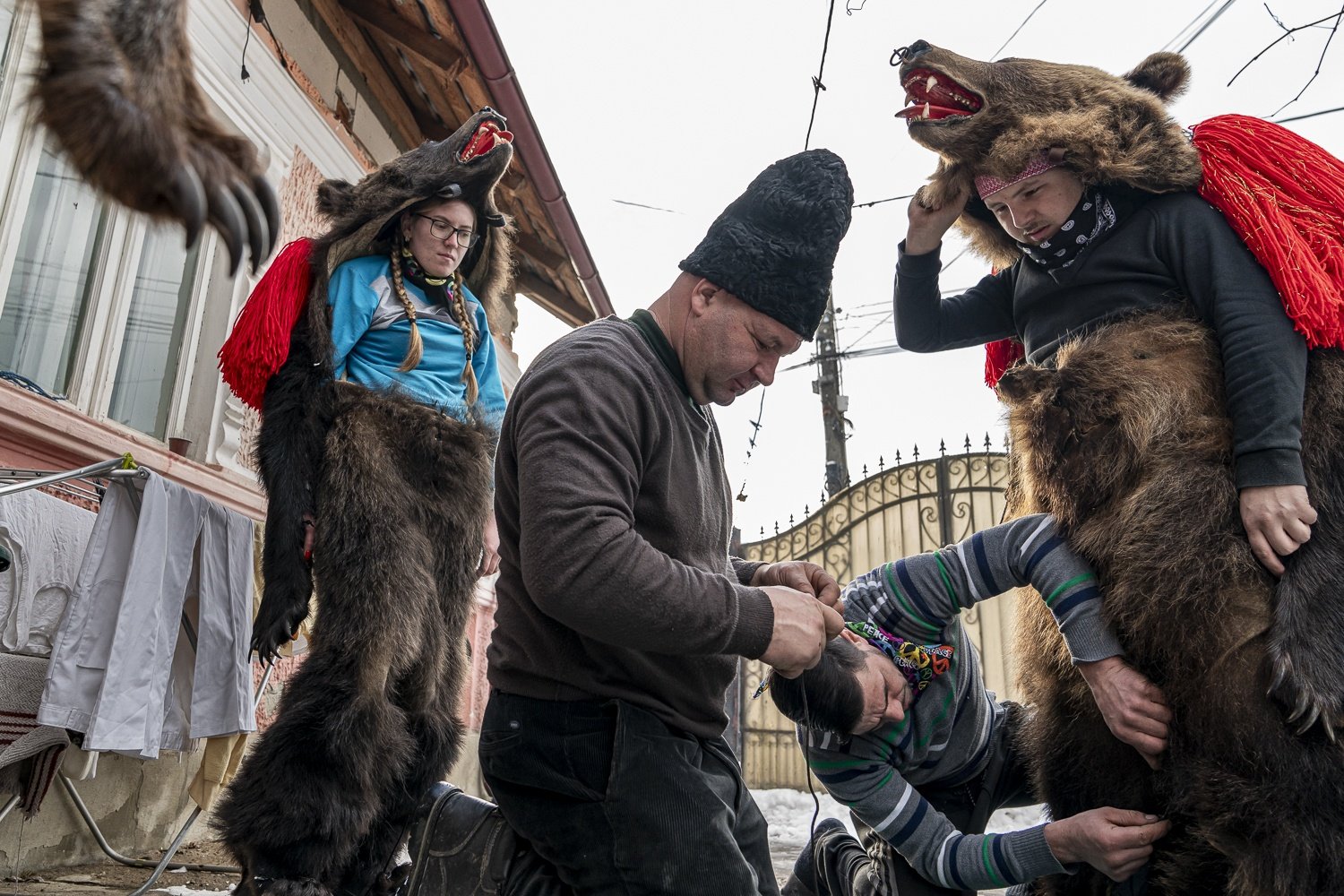Words & Photos: Mihnea Turcu
December 2023
Fright at First Sight
It was December 1982, right after Christmas, when the winters started early and everything was already covered in white. That evening, in the small town of Darabani, in Romania’s eastern Moldova region, I went for a walk with my grandmother. I held her hand tightly as I let my eyes look up at the dancing flakes in the blue light of the street. I was about four years old, floating and dreaming, enchanted by the snow’s color and smell. With my hand in hers, I felt in harmony. I felt safe.
We had reached a pedestrian alley in front of the cinema when a group of dark, brown, furry beasts surrounded us from one side. They leaned over and growled, jumped, and rolled on the ground, showing their fangs, getting so close with their fierce heads that it seemed deliberate – almost as if they wanted to touch and scare us. Steam came out of their mouths, and instead of hands, they swung enormous claws in the air. Overwhelmed, I experienced a mixed sensation of pure fear and curiosity. My heart was pounding, and I had become small(er), covered by a thunder of deafening drums.
I didn’t know it then, but I had stumbled into the midst of a Bear Parade. And it wasn’t exactly love at first sight. But my curiosity, fueled by my camera lenses over the years, urged me to explore further these exotic events in which people dress up as bears. They take place in the villages and towns of what is now northeastern Romania.
The moment, long ago in childhood, remained deeply imprinted in my mind and soul. My grandparents later moved from Moldova, and for many years after that, I lost touch with the local traditions. However, once photography became my form of expression, these deeply preserved memories returned and called me. The only natural thing I could do was to go back there and rediscover them.
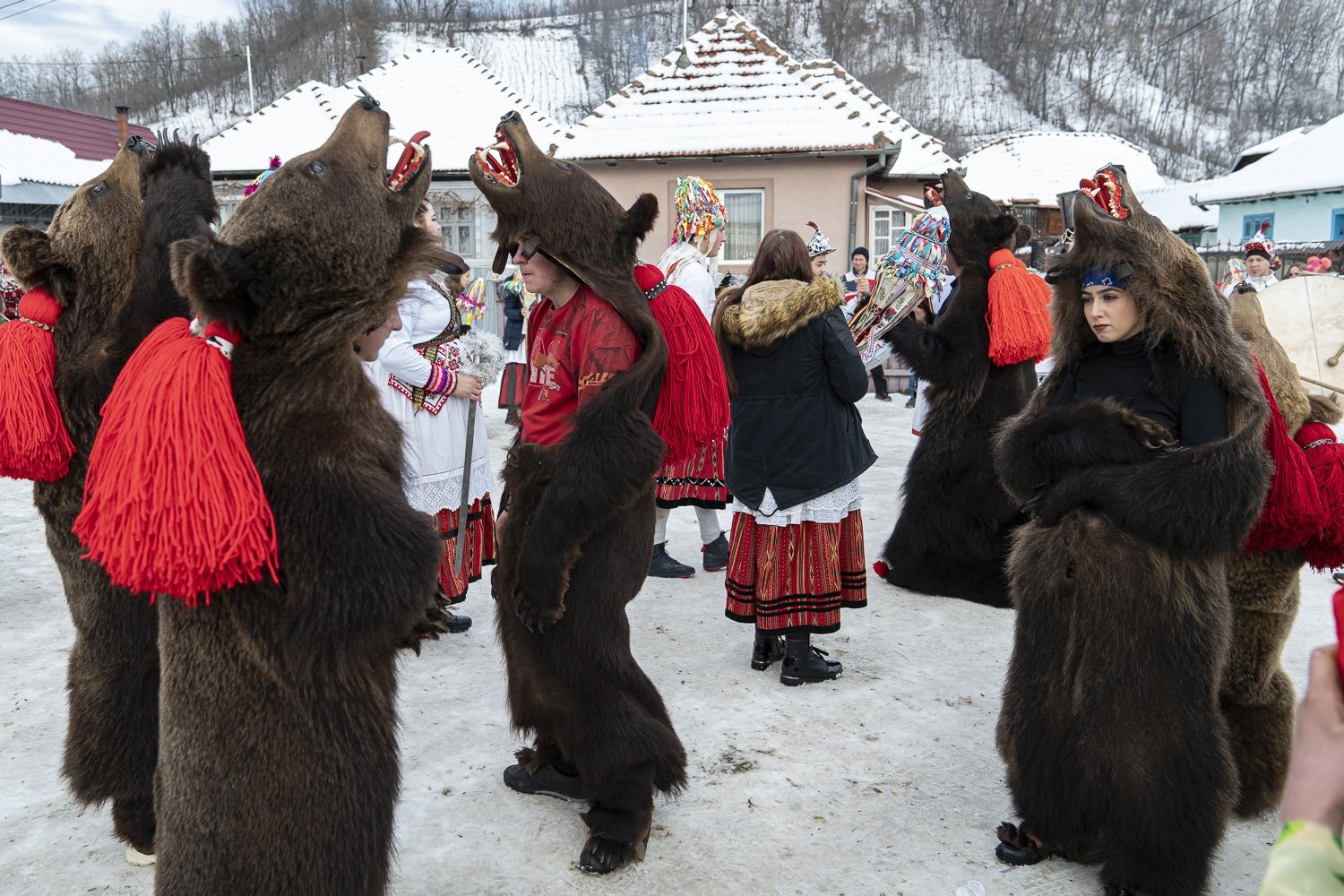
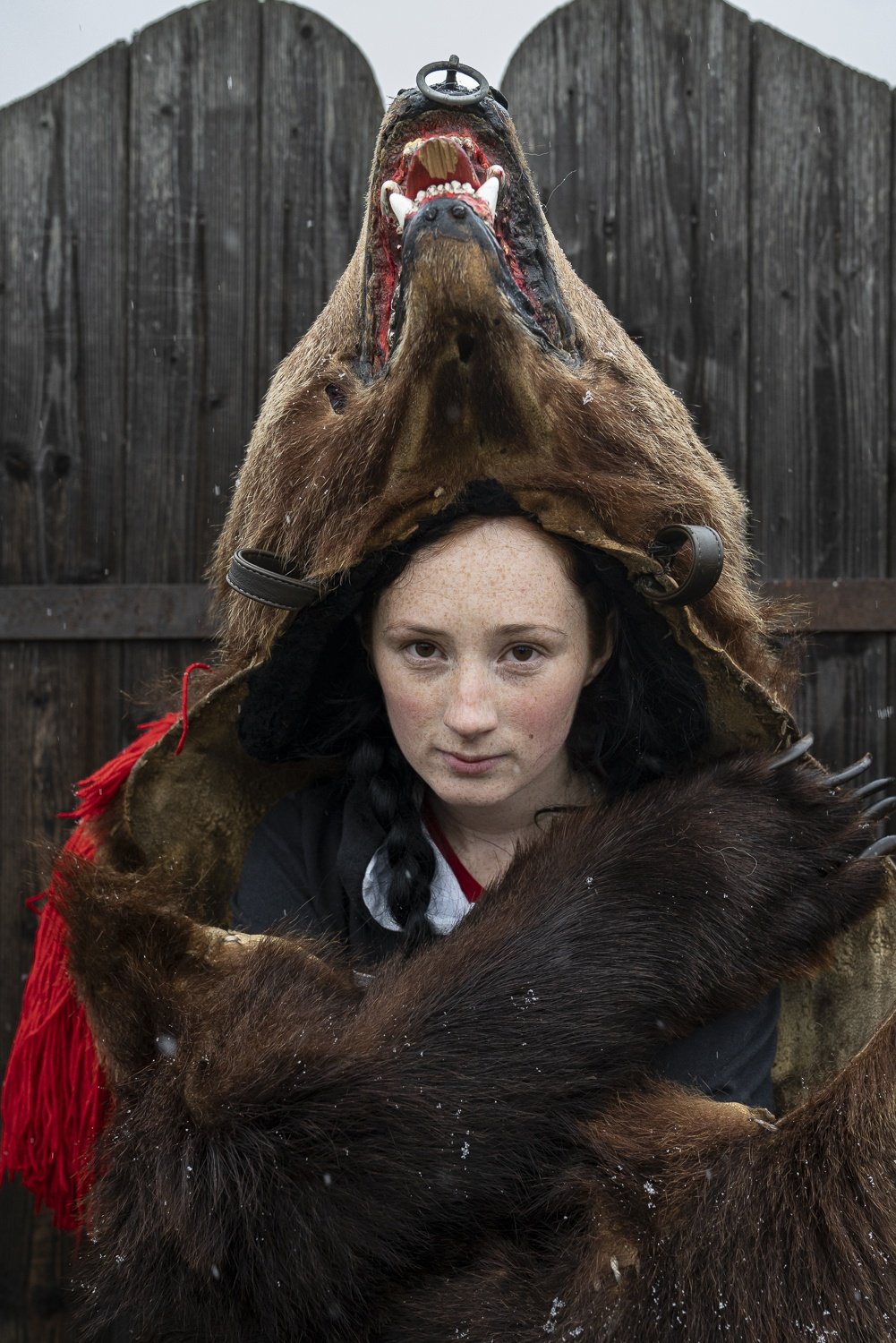
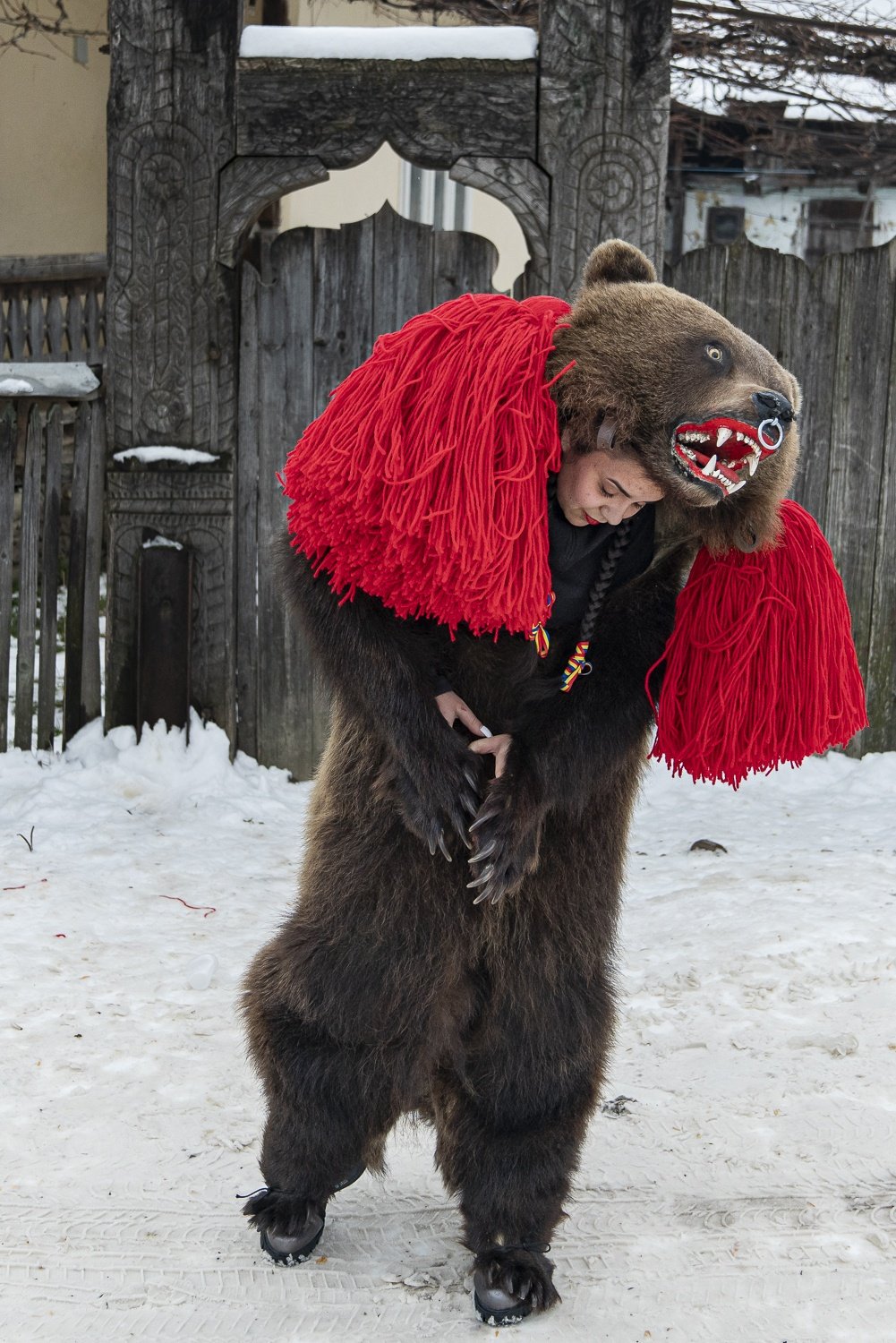
Dancing Evil Spirits Away
A journey through the winter traditions in Moldova’s entire region is difficult to undertake or fulfill, with time being the main adversary. Everything happens almost simultaneously, and you can only be in one place. The events start a day or two before Christmas and end on the second or third day after New Year.
The Bear Dance is an old tradition throughout the Balkan region. Some sources say it dates back to the Geto-Dacian civilizations, and they have been initially related to their mystical beliefs. However, there is no proof of this supposition. A more realistic theory places the origins of our tradition back to the 17th century, when groups of nomadic gypsies traveled the area with their tamed bears, convincing local people of their healing powers. Over centuries, people have transformed it into a way of expressing their own spirituality. Its symbolism and manifestations vary from one area to another, and the masks change drastically within relatively close regions, taking on different connotations from one cultural area to another. Although initially scary and frightening , it celebrates “joy” and the freeing of the spirit.
The change of seasons and life’s close connection to nature push people towards a need for revitalization, a return to the depths of the soul, cleansing, and expression. Over time this tradition found its place in our region amid winter, when the body rests and the spirit, between the end and the beginning of a new year, redefines itself.
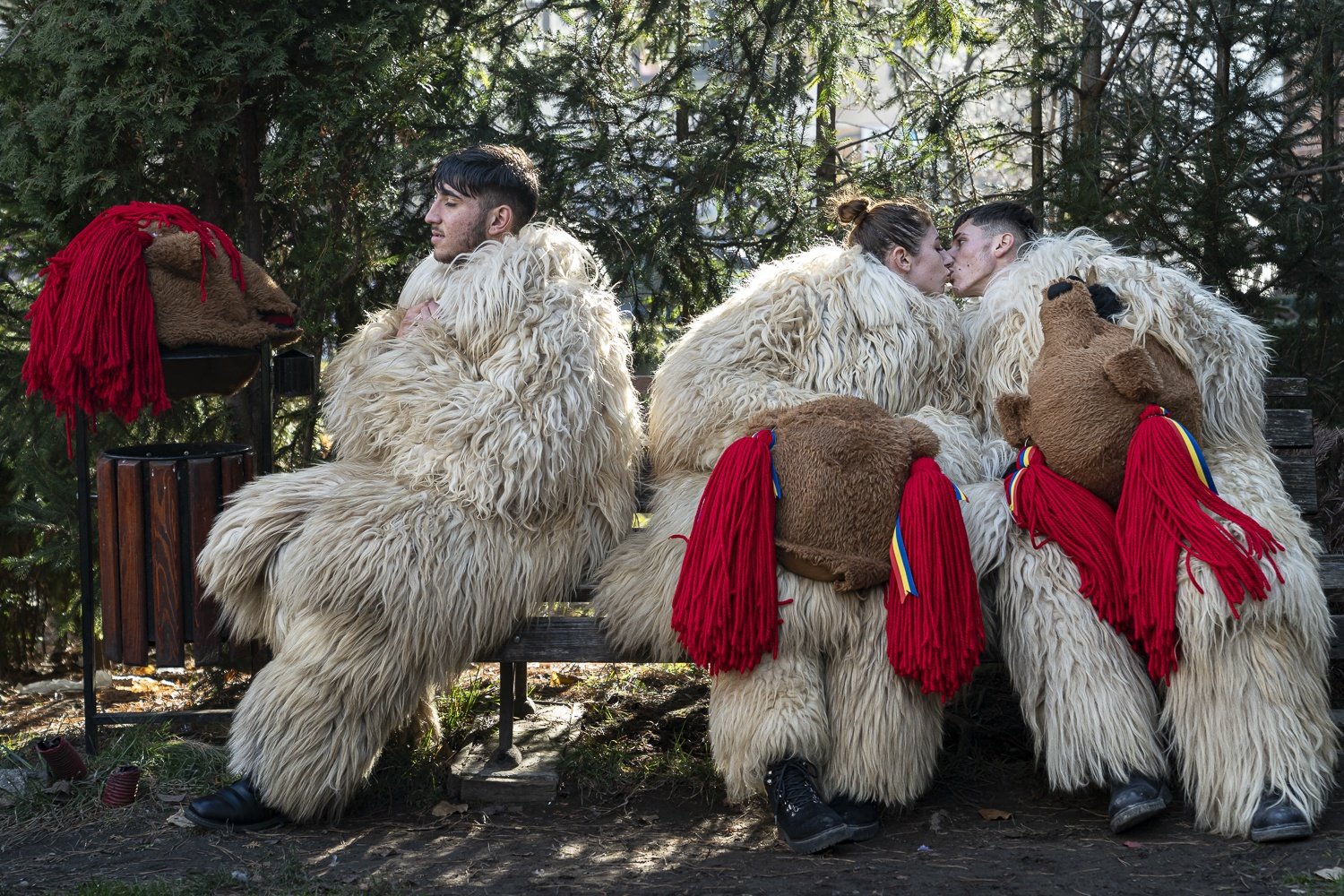
We have developed a true cult for bears in Moldova, with our mountains and endless forests. They have come to be perceived not only as violent, cruel, and unpredictable animals but also as powerful, pure, and respected. All these feelings have transformed them into something sacred, almost totemic for us.
The Bear Dance is probably the most spectacular masked dance I’ve encountered in the Carpathian region. It’s full of symbolism and has numerous meanings: the spirit of the forest, the supreme master of cosmic energies, a manifestation of fertility, and the energy that drives away death, illnesses, and evil spirits. It was not uncommon for sick children outside the Christian tradition to be named “Bear” with the firm belief that it would help drive away illness and heal them.
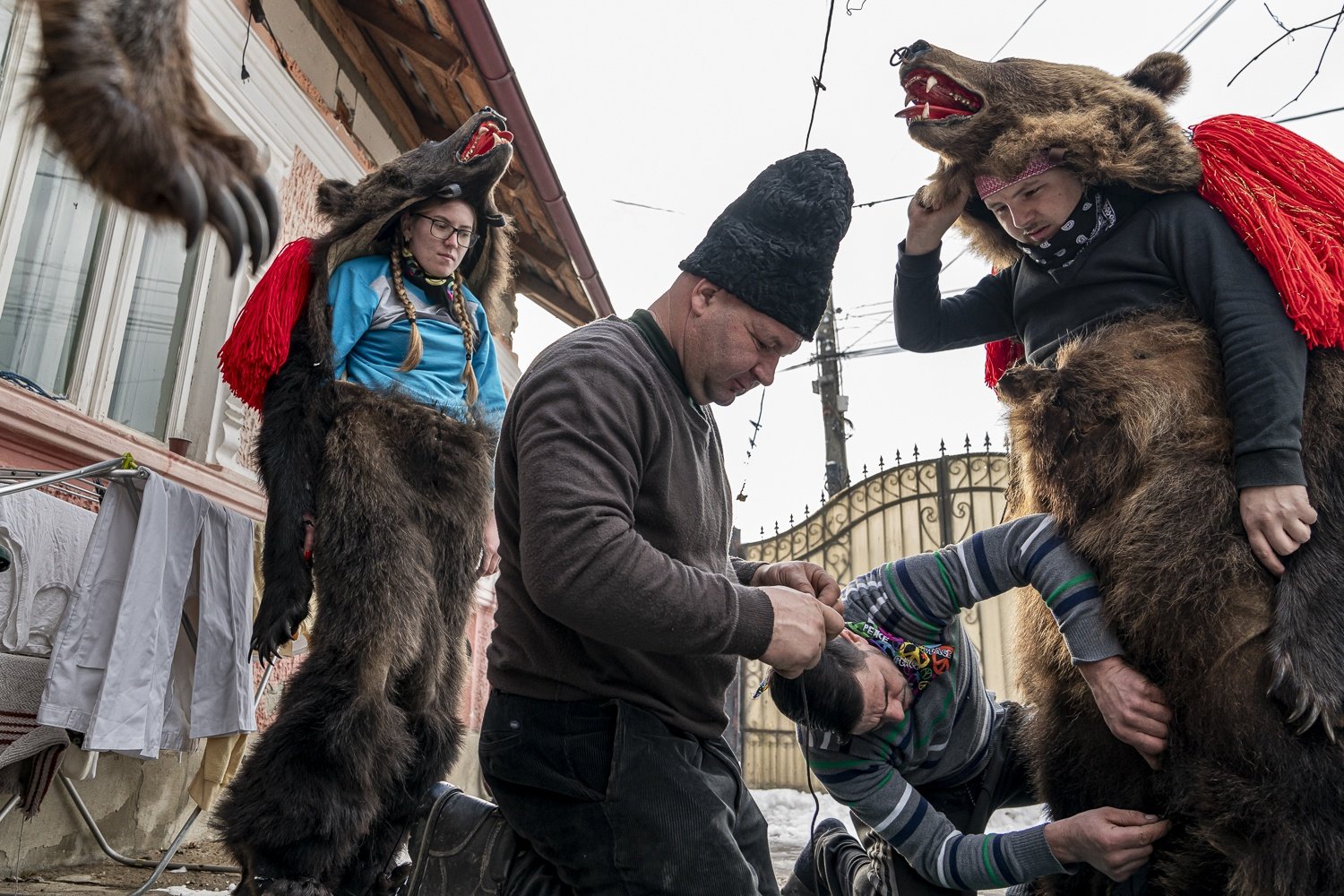
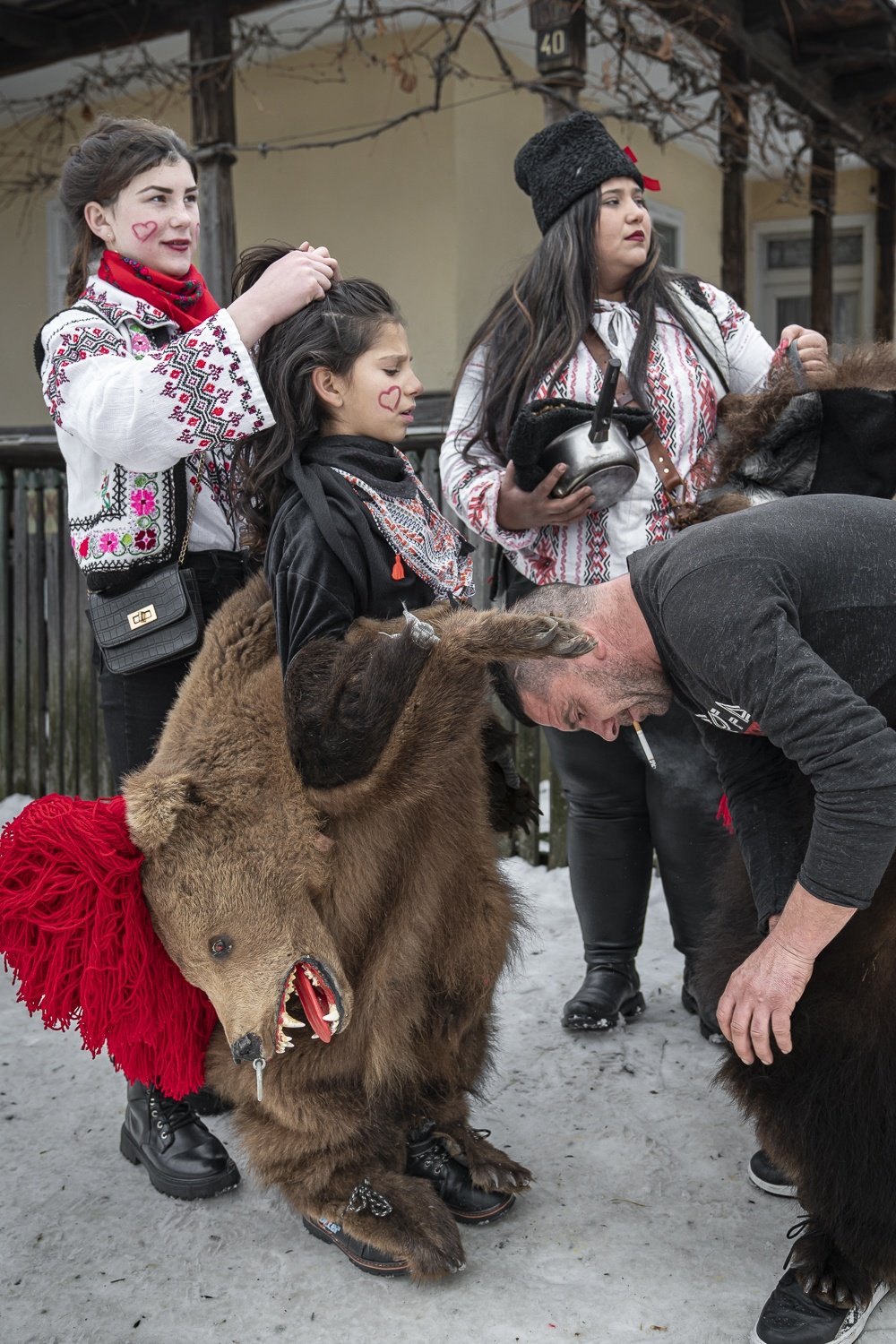
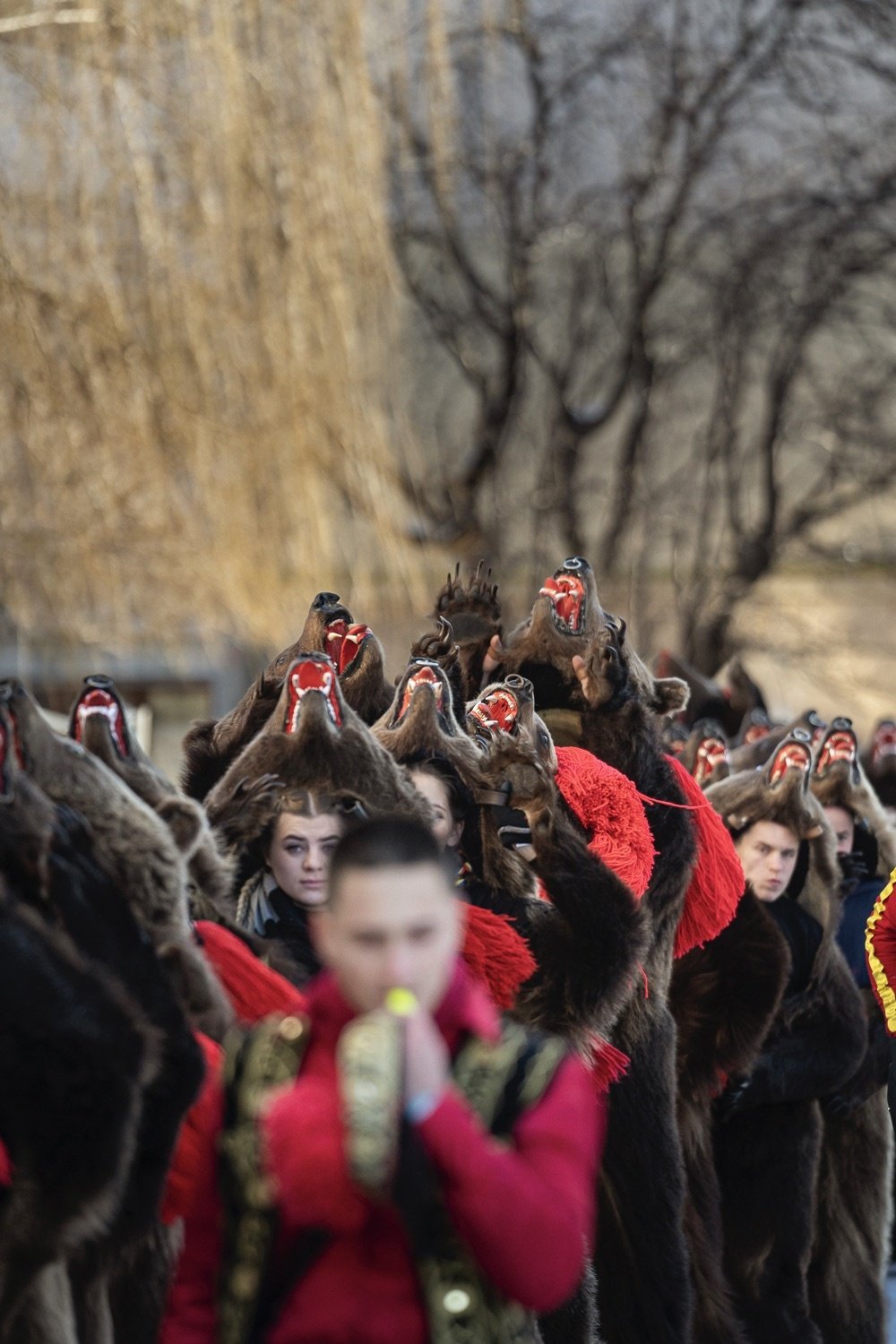
One Tradition, Many Ways
The bear costumes can be made either from real or fake skin. In the towns and cities in the Bacău area, such as Dărmănești, Moinești, Comănești, and Asău, natural bear skins dominate, and the events are organized on consecutive days, reaching the scale of a spectacle. Further north, in Botoșani county, in the villages of Tudora and Vorona, the outfits are made from various materials, mixed among ancient and modern masks and other animals. In the Iași area, in the villages of Ruginoasa or Coarnele Caprei, masks are made from horsehair or sheepskin. Just a few hours away, across the Siret River, in the space of the former Austro-Hungarian Empire, groups are predominantly constituted by traditional costumes, ancient sheepskin masks, and others symbolizing and ridiculing community characters: the officer, the doctor, the priest, the gypsy, the goat, or the shepherd.
Preparing the mask for the festivities receives special attention, with the most archaic ways being found in the villages of northern Moldova, in the Suceava area. Here, ropes made from oat straw, up to 40 meters long, are crafted and then sewn onto the wearer’s clothes. People use calf or lamb skin over a metal bucket for the bear’s head shape. In the end, the costume is thrown into the fire, symbolizing the death and rebirth of vegetation.
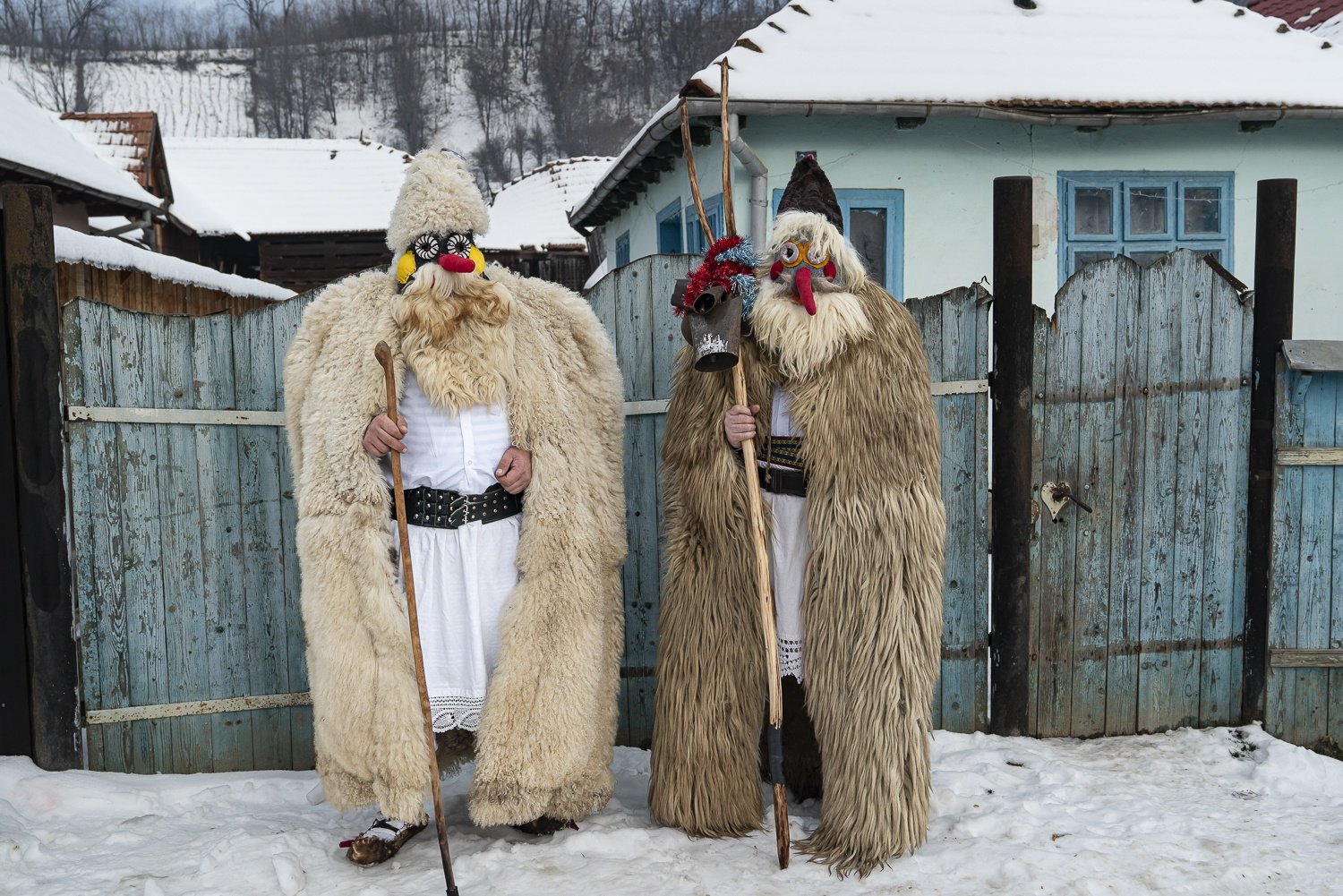
Further south, toward the center of Moldova, in the villages along the Trotuș Valley, the tradition has evolved into large-scale performances with scenes, competitions, and famous groups gathering from all the villages. Here, the masks are made from actual bear skins, processed, and adapted.
A fog that carols the village’s streets in the days before New Year, repeating the dance from house to house, is composed of at least four or five ‘bears,’ escorted by their ‘bear masters,’ a symbol of those who have tamed them, the connection between the wild beast’s world and those of humans. In front of the procession, a few drummers are setting the rhythm. Whistlers wear traditional Romanian costumes, followed by several other masks with various representations.
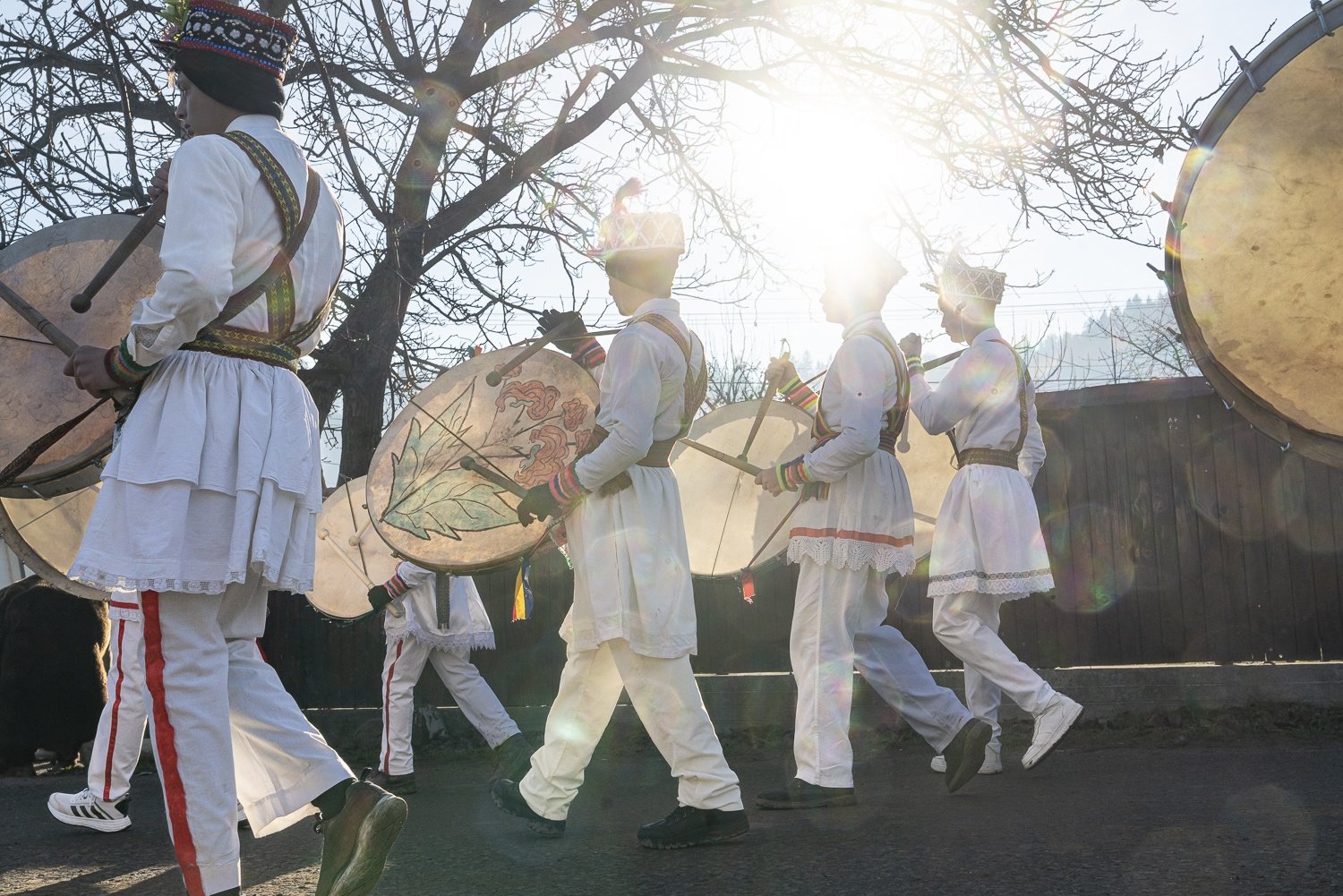
The Bear Dance, like all other traditions during the winter holidays in the Moldova region, comes and traverses generations from somewhere far away, beyond time.
These customs have a life of their own; they live outside of religion or culture, being a pure form of expressing the spirit. But this world lives beyond the written words, and you would best feel it only if you would find yourself suddenly surrounded by a group of dark beasts, murmuring and howling, rolling and swirling, in waves of steam and the sound of deafening drums. Each time I return here to see them, I do not know if I will meet the heart of a four-year-old boy holding his grandmother’s safe hand or have awakened inside me the spirits my ancestors felt for generations.
